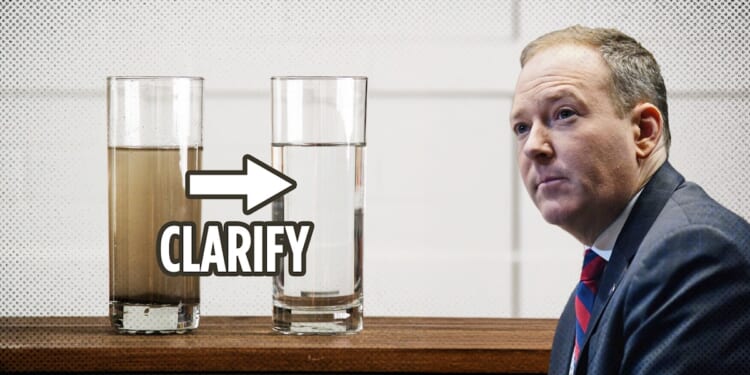One of the most infamous examples of blatant federal regulatory overreach in recent memory was the Obama-era regulation of the Waters of the United States (WOTUS).
In 2015, the Obama-era Environmental Protection Agency introduced a new “significant nexus” standard to the Nixon-era Clean Water Act. That new standard effectively granted the federal government greater regulatory power over private landowners’ property if their property contributed to “downstream traditional navigable waters.”
That contribution could range from a ditch that fills with water after a heavy rainstorm to a small temporary creek to a temporary pool of water. Conceivably, if water falls on private property, the EPA could use the WOTUS as an excuse to prevent a landowner from using their own land.
This was exactly the issue with one Idaho couple. The EPA prevented the Sacketts from building a house on their land because the agency ruled, under WOTUS, that it would threaten wetlands on part of their property, from which a creek formed that eventually led to a lake. The EPA threatened the Sacketts with $40,000-per-day fines if they proceeded with construction.
In 2023, the U.S. Supreme Court ruled in favor of the Sacketts in Sackett v. EPA and ordered the regulation changed and clarified.
The Biden administration partially amended the rule after the Court’s decision, but it failed to fully follow through and ensure WOTUS was limited and properly defined.
Now, the Trump administration is working to ensure that this WOTUS regulatory overreach is fully corrected. EPA Administrator Lee Zeldin and Assistant Secretary of the Army for Civil Works Adam Telle recently introduced a rule change to prevent a future administration from using WOTUS to abuse Americans’ property rights.
The newly proposed WOTUS rule, which is now open for public comment for 45 days, clearly defines terms and establishes limits on exactly what WOTUS applies to.
The new rule contains six significant revisions, which include the following:
- The definition of key terms such as “relatively permanent,” “continuous surface connection,” and “tributary.”
- The delineation of jurisdictional tributaries that must be connected to traditional navigable waters directly or indirectly through means that provide a consistent and predictable flow.
- Wetlands must be clearly and directly touching jurisdictional water, and most hold surface water for the requisite duration year after year.
- Increase state and tribal decision-making authority with clear regulatory guidelines.
- Provide and maintain clear definitional distinctions for certain ditches that exclude them from WOTUS regulation.
- Add locally familiar terminology, such as “wet season,” to make it clear which bodies of water fall under WOTUS.
As West Virginia Governor Patrick James Morrisey observed, “For too long, there’s been a great deal of uncertainty about this term, Waters of the United States Rule. Unfortunately, it left many people holding the bag — farmers, contractors, small business owners — guessing whether their ephemeral stream or a backyard ditch was going to be classified as a Waters of the United States Rule, and potentially subject them to significant penalties.”
The aim of the Trump administration is to eliminate this confusion, add definition clarity, and limit government overreach. This is indeed welcome news and hopefully marks the end of the abuse of Americans’ property rights via the WOTUS under the guise of protecting the environment.
















